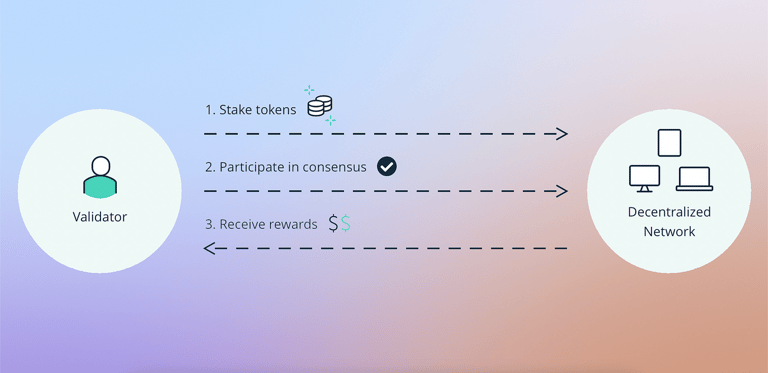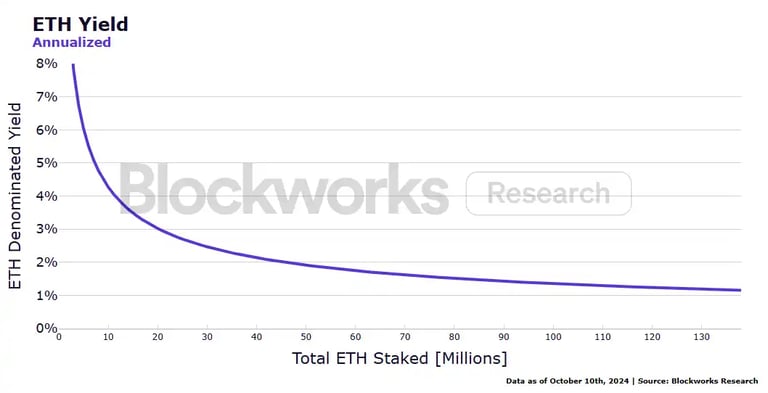Understanding Ethereum's Proof-of-Stake Mechanism
Explore Ethereum's Proof-of-Stake (PoS) consensus mechanism, including solo staking, staking pools, and exchange staking. Learn about their advantages, disadvantages, and the impact on Ethereum's security and tokenomics. Ideal for cryptocurrency investors and DeFi enthusiasts.
TECHNICAL
1/16/20253 min read


Proof of Stake is one of the two main consensus mechanisms utilised to secure blockchains in a decentralised way within cryptocurrencies today. Proof of Stake within the Ethereum network functions by incentivising ETH token holders to lock up their coins into a deposit contract, becoming a validator which they then can receive some ROI on their tokens in the form of ETH raised by transaction fees with basically no risk which has lead to just shy of 30% of all ETH tokens being staked to secure the network
Within the Ethereum network the mechanics of proof of stake involve running a validator node and locking up 32 ETH. There are multiple ways to achieve this outcome for a user including solo staking, staking pools, staking as a service (saas) and staking on centralised exchanges which all provide the user with return on their investment in the form of ETH
Solo staking works by running your own validator node and locking up the 32 ETH on your own, the benefits include minuscule to no trust in third parties, this method allows a validator (staker) to maximise their rewards due to not having to pay additional fees to staking pool operators, solo staking offers a high level of autonomy and control over one's funds. The downsides include requiring a large amount of capital (32 ETH), high level of technical expertise as well as being responsible for node uptime. Obviously this is not feasible for everyone who would like to stake their ETH tokens due to these limiting conditions and approximately $100,000 USD worth of ETH tokens required, which has lead to third parties creating services to make staking ETH more accessible to the average user
Staking as a service is quite similar to solo staking with the only small difference being that the user does not require the hardware needed for solo staking and can delegate it, while still maintaining security over their deposit, a small fee will be taken from the staking yield to cover the operator of the delegated hardware being utilised
Staking pools operate by allowing ETH holders to send their tokens and have them managed and staked by the pool operator. The benefits of this is that all of the technical work gets managed by the pool operator and there is a reduced risk of slashing, which is when you lose some of your tokens (stake) due to block mismanagement. The downsides are trust is required by the pool operator and some of the staking rewards are paid as a fee. Staking on centralised exchanges such as Coinbase is similar to this, although the process is more simple and can be compared to earning interest within a savings account. The downside of staking on the exchange is that it is no longer decentralised, although it does offer superior convenience
Currently, the staking yield on the Ethereum network is 2.23%. This amount of ETH distributed to stakers is not set in stone and is able to fluctuate depending on the market conditions to allow the network to run smoothly and efficiently. As we can see the more ETH staked, the less the staking yield, which creates natural market pressure for ETH holders to stake when there are few stakers due to high yield. Due to transaction fees within the network, the amount paid to stakers is more than covered by the fees generated by transactions which results in Ether becoming a scarcely depreciating asset which creates upwards momentum within the price, attracting investors and bringing more stake to secure the network






Get in Touch
We'd love to hear from you! Reach out for questions, feedback or other enquiries
Reach
info@bitesizedblockchain.com
Bite Sized is not affiliated with these brands in any way





Grab your daily web 3 byte
